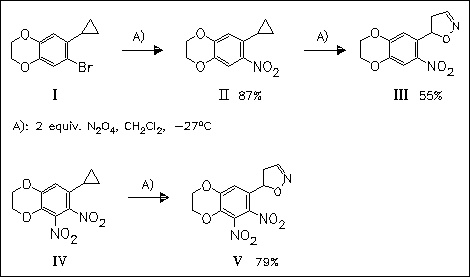ChemInform Abstract: Reaction of Substituted 7-Cyclopropyl-1,4-benzodioxanes with Dinitrogen Tetraoxide.
Abstract
ChemInform is a weekly Abstracting Service, delivering concise information at a glance that was extracted from about 100 leading journals. To access a ChemInform Abstract of an article which was published elsewhere, please select a “Full Text” option. The original article is trackable via the “References” option.
ChemInform Abstract
The reaction of 6-bromo-7-cyclopropylbenzodioxane (I) with N2O4 provides the product of ipso-substitution (II) with preservation of the cyclopropane ring. Further reaction of mononitro-compound (II) with N2O4 as well as the analogous reaction of 7-cyclopropyldinitrobenzodioxane (IV) gives products of insertion of NO in the three-membered ring, isoxazoline derivatives (III) and (V), respectively. A plausible explanation for the difference in the reaction paths is given.





